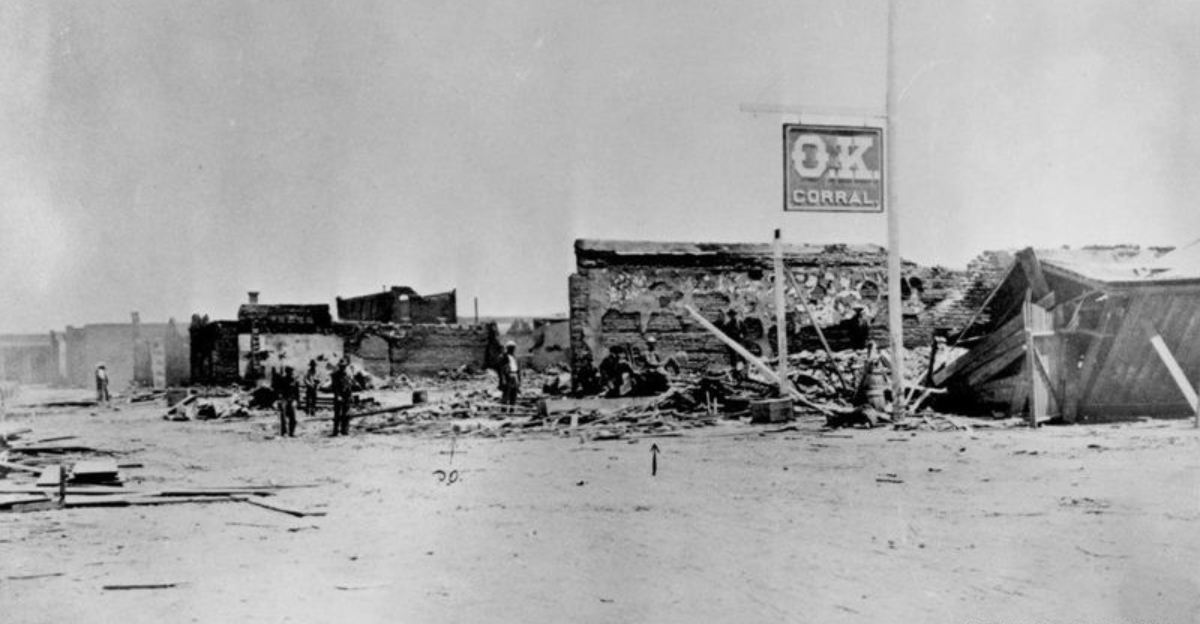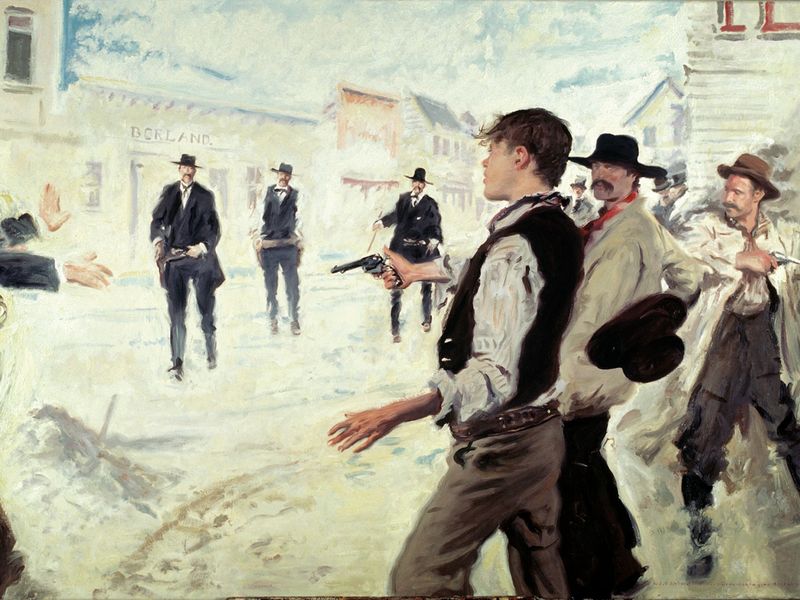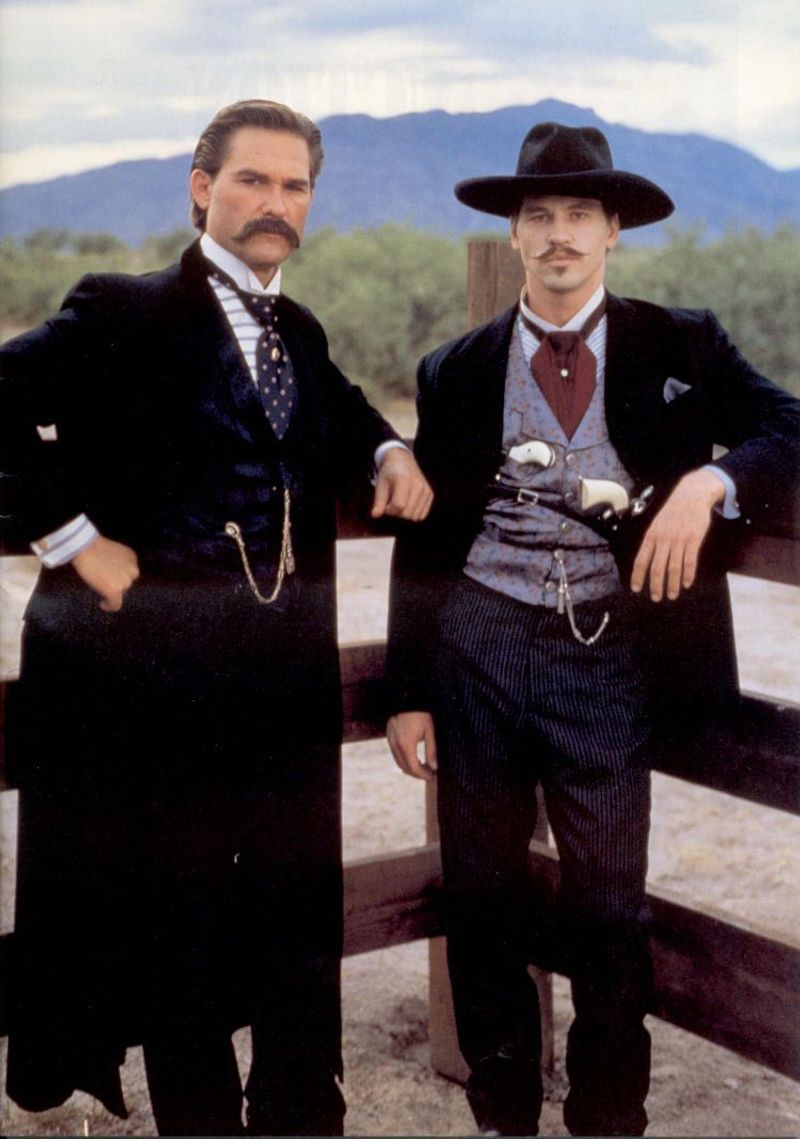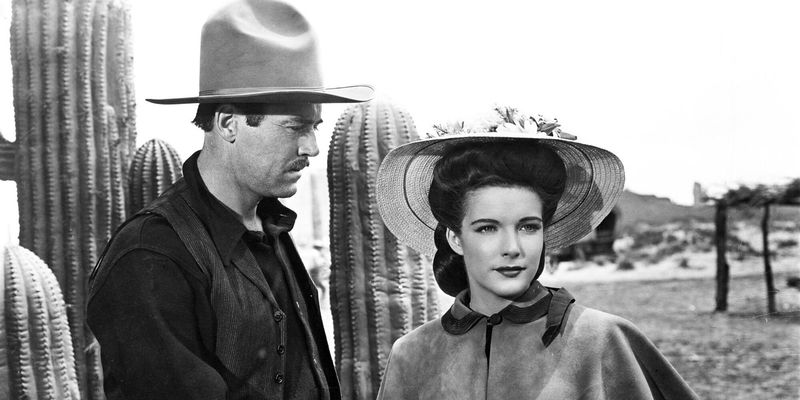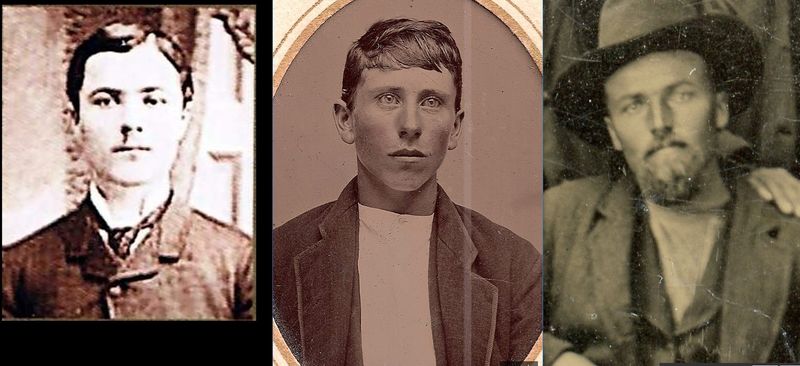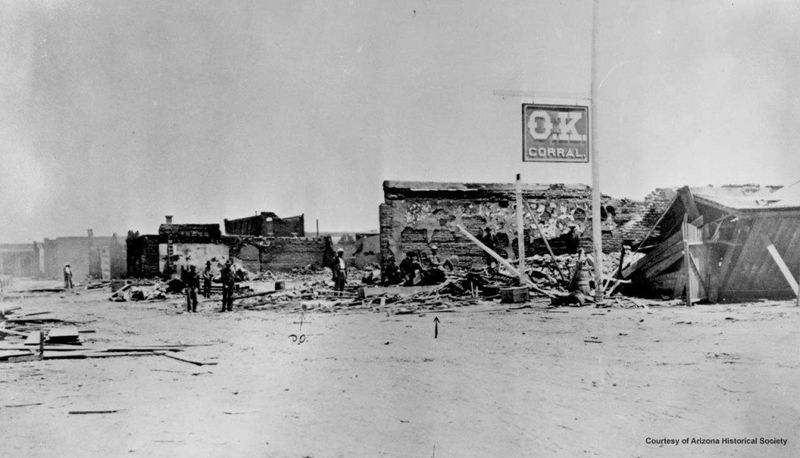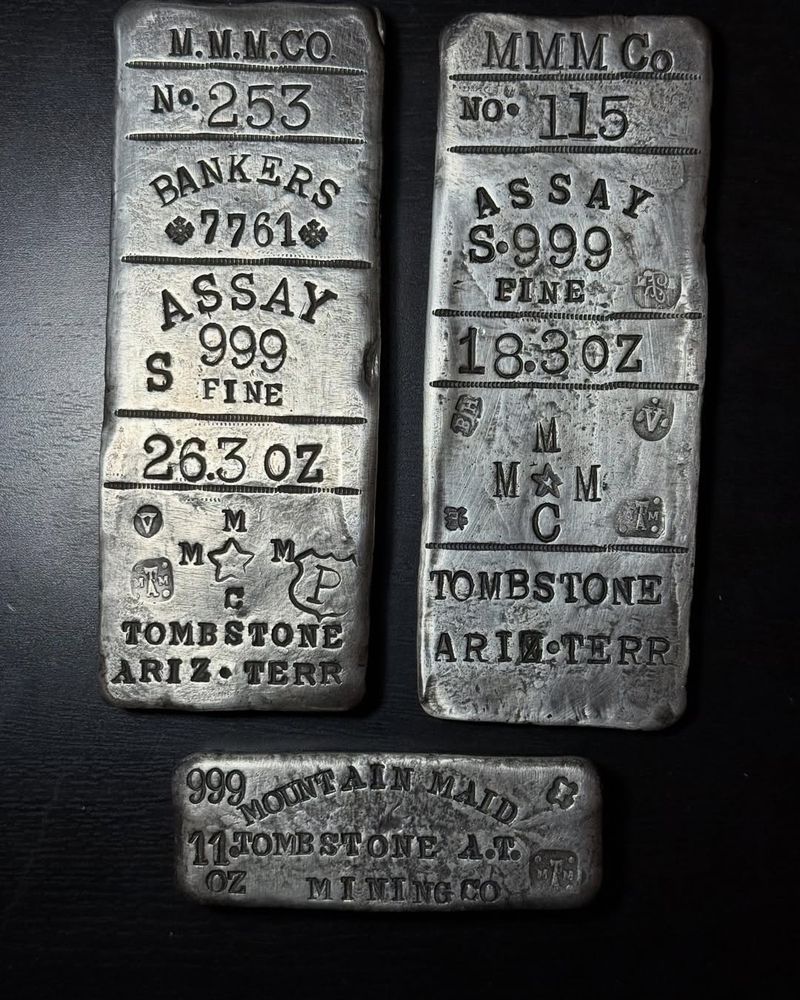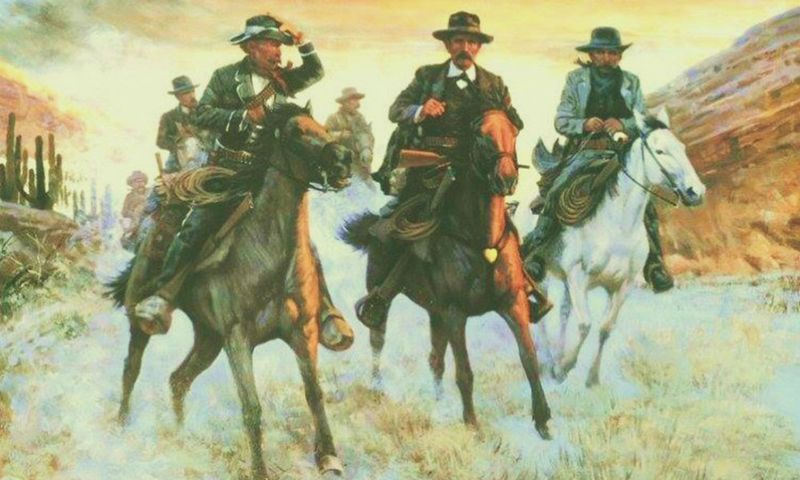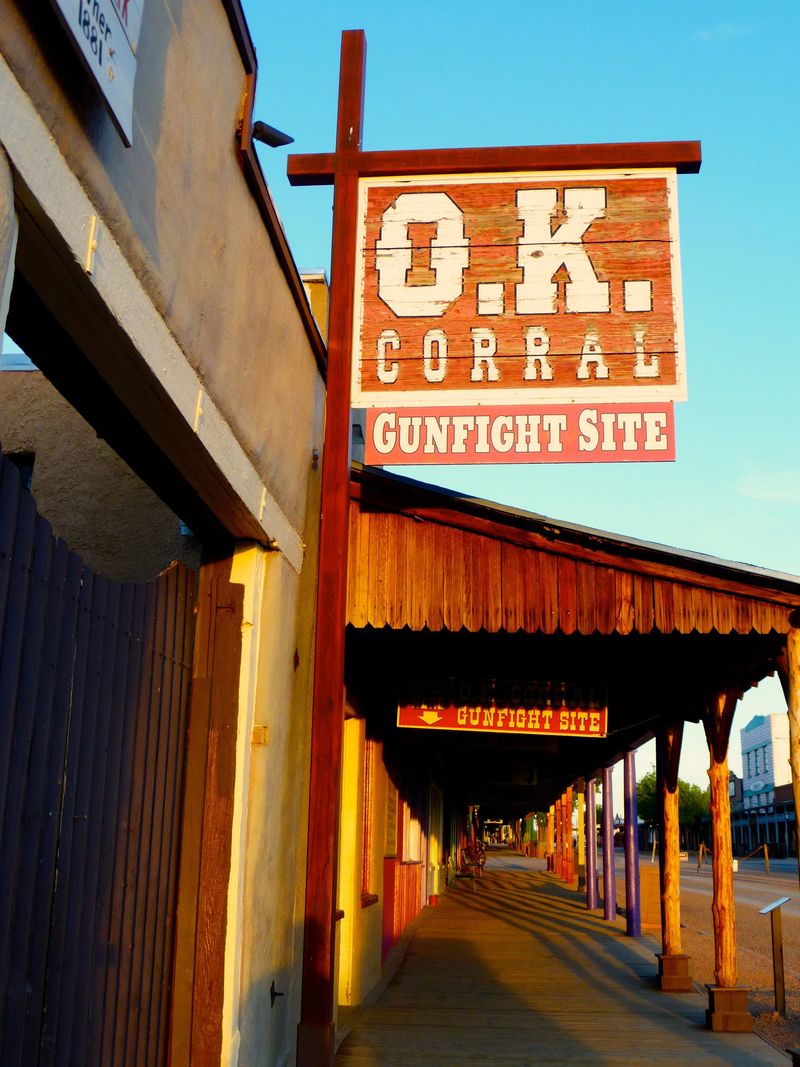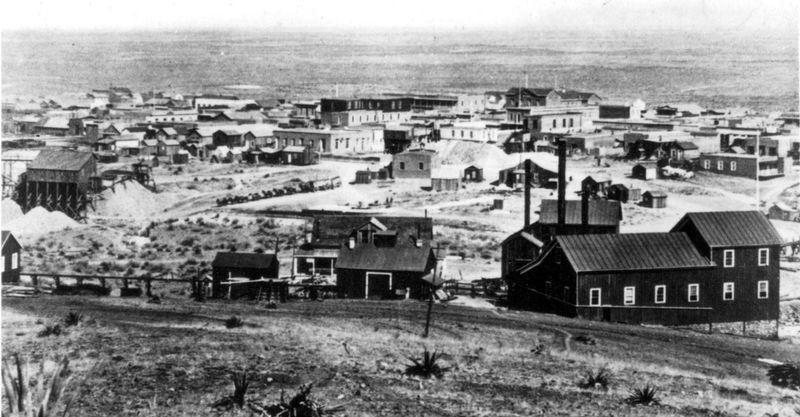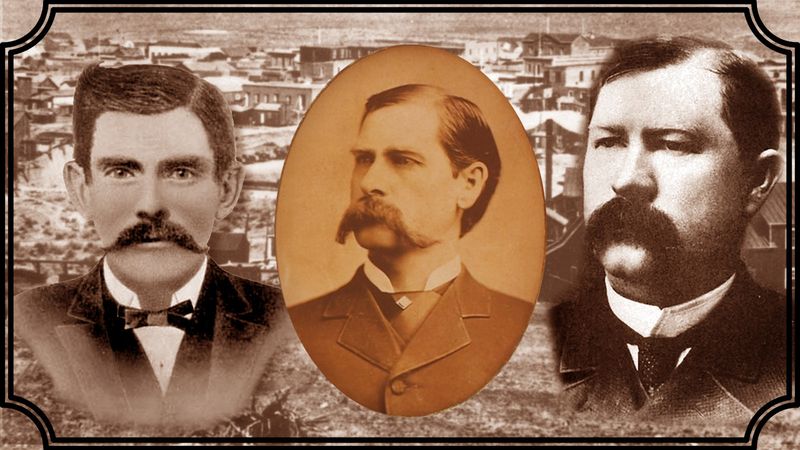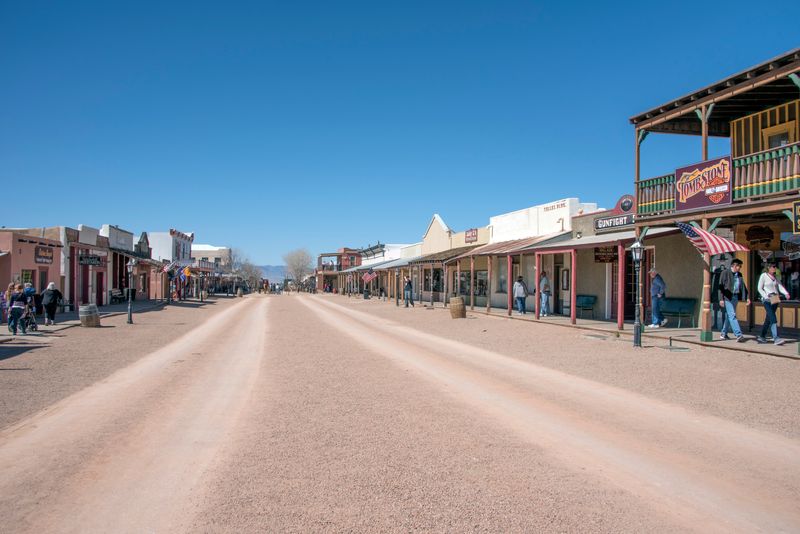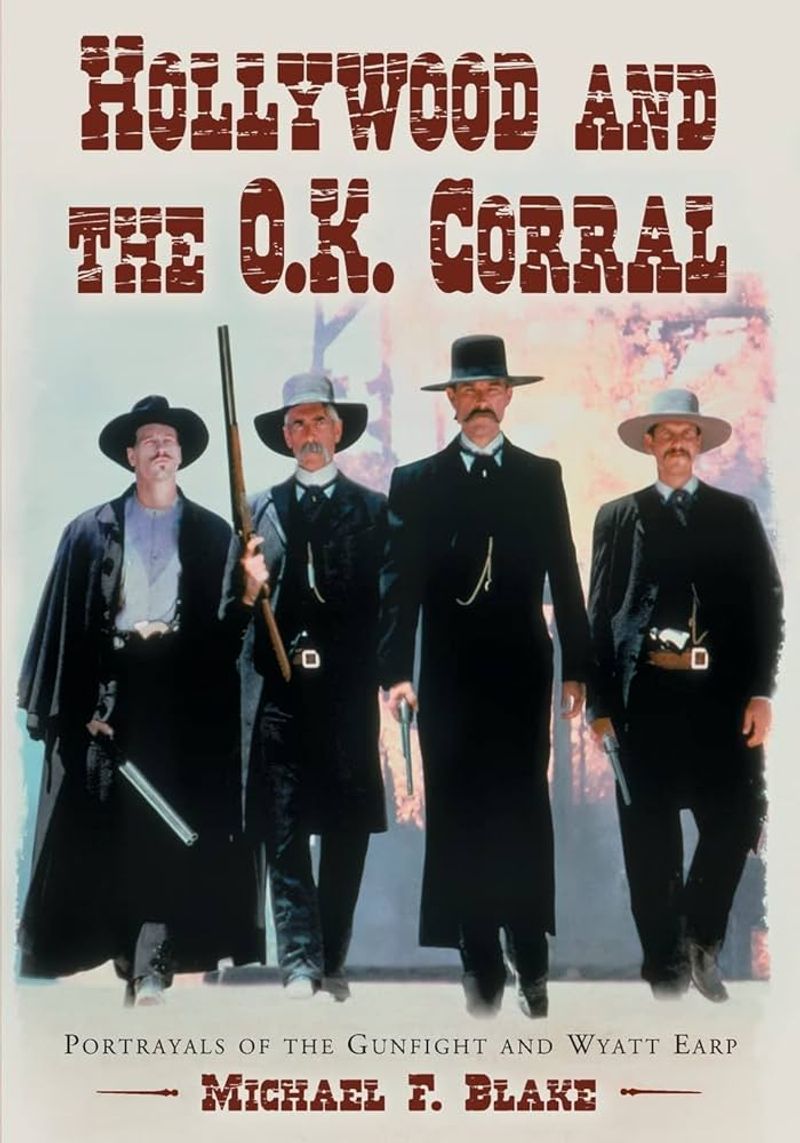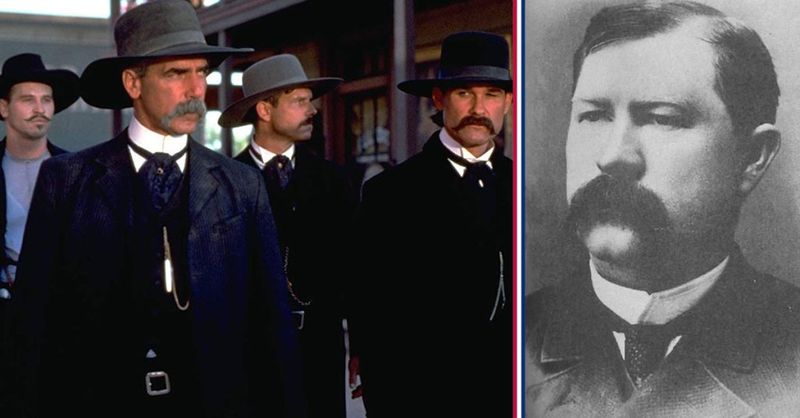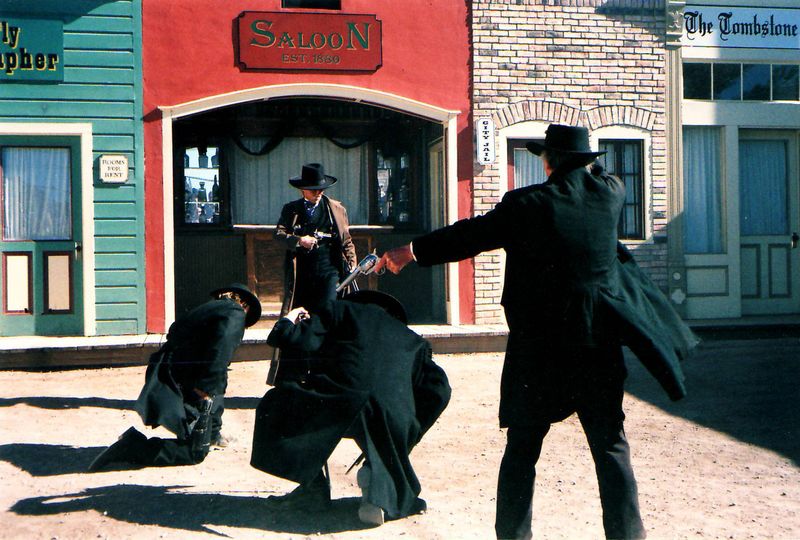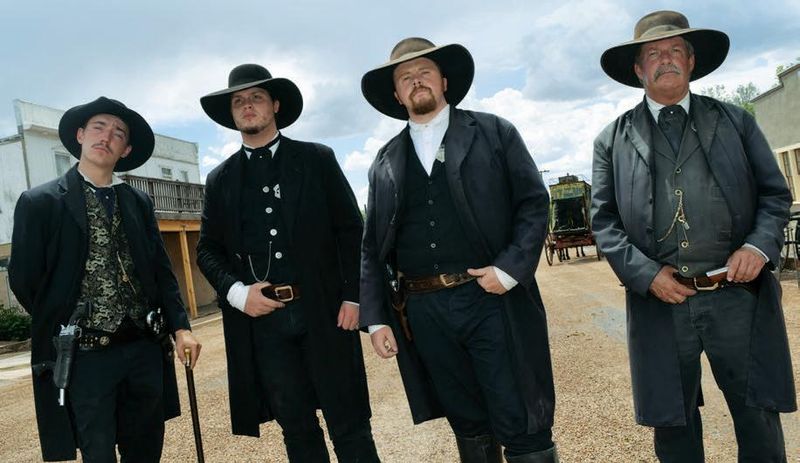The O.K. Corral is one of the most iconic events of the Wild West, yet many of its truths remain shrouded in mystery and myth.
This collection of 16 truths unveils those hidden stories and secrets left out of your history books. From unexpected alliances to personal vendettas, these lesser-known facts will give you a richer understanding of this legendary showdown.
1. The Real Reason Behind the Gunfight
The infamous gunfight at the O.K. Corral wasn’t just about law versus outlaws. It was a tangled web of personal vendettas, politics, and business interests. The Earps and Doc Holliday weren’t solely acting as lawmen.
They had their own motivations, including personal grudges and economic ambitions. The cowboy faction had been accused of cattle rustling, but this was also about control of lucrative silver claims.
This multifaceted conflict was a boiling point in Tombstone’s turbulent times, far more complex than the black-and-white tale often told.
2. Doc Holliday’s Unlikely Friendship with Wyatt Earp
Doc Holliday and Wyatt Earp’s friendship was an anomaly in the Wild West. Holliday, a Southern gambler, and Earp, a lawman with strong ideals, seemed an unlikely pair. Their bond was built on mutual respect and necessity.
Holliday’s sharp wit and Earp’s steadfast nature complemented each other, creating a formidable partnership. In a world where alliances were fragile, their friendship stood as a testament to loyalty amidst chaos.
This unexpected camaraderie played a pivotal role during the events at the O.K. Corral.
3. The Role of Women in the Showdown
Women were not mere spectators in the O.K. Corral saga. They were deeply entwined in the lives of the key players, influencing decisions and offering support.
Figures like Big Nose Kate, Doc Holliday’s companion, played roles behind the scenes, providing shelter and strategic advice. These women navigated the complexities of Tombstone society, often using their influence to sway outcomes.
Their involvement adds a layer of depth to the narrative, highlighting their crucial yet understated contributions.
4. The Lesser-Known Cowboys
The cowboys involved in the O.K. Corral weren’t just faceless outlaws; they had their own stories and motivations. Figures like Billy Clanton and the McLaury brothers were more than just villains; they were individuals caught in a power struggle.
Their lives reflected the rugged realities of frontier life, often driven by survival and familial loyalty. Understanding these men as complex characters rather than mere antagonists enriches the historical tapestry of the gunfight.
5. Tombstone’s Political Climate
The political climate in Tombstone was as volatile as dynamite, setting the stage for the O.K. Corral conflict. The city was divided between two factions: the Earps, representing law and order, and the cowboys, who were viewed as the opposition.
This division was fueled by differing visions for Tombstone’s future, particularly concerning its economic prospects. These political tensions were a powder keg, with the gunfight serving as the spark that ignited widespread turmoil.
6. The Influence of Silver on Tensions
Silver was the lifeblood of Tombstone, and its discovery led to an influx of wealth and conflict. As silver claims became valuable, they attracted all manners of intrigues and disputes.
The Earps sought to maintain order to protect these interests, while the cowboys often found themselves on the opposing side, accused of rustling cattle linked to these claims.
This economic backdrop added fuel to the fire, making the O.K. Corral more than just a personal vendetta but a clash over prosperity.
7. The Earp Vendetta Ride
After the O.K. Corral gunfight, tensions didn’t dissolve; they escalated into what’s known as the Earp Vendetta Ride. Following the murder of Morgan Earp, Wyatt and his posse sought revenge against those they deemed responsible.
This act of frontier justice blurred the lines between lawmen and vigilantes. Their quest for retribution added another layer to the narrative, highlighting the relentless cycle of violence in the Old West.
8. The Legal Battles That Followed
The aftermath of the gunfight involved not just bullets but legal maneuverings. The Earps and Doc Holliday faced charges of murder, leading to a highly publicized trial.
This legal battle highlighted the complexities of justice in the Wild West, where laws were often as flexible as the morals of those enforcing them.
The courtroom drama served as a stage for public opinion, further polarizing the community and capturing the nation’s attention.
9. The Myth of the O.K. Corral
The gunfight at the O.K. Corral quickly became mythologized, turning into a larger-than-life tale of good versus evil. Hollywood contributed to this legend, often simplifying and dramatizing the events into a classic Western showdown.
The reality, however, was far more nuanced, with morally ambiguous characters and unclear motives. This myth-making process has shaped public perception, overshadowing the complex truths of that fateful day.
10. The Role of Alcohol in the Conflict
Alcohol flowed freely in Tombstone, fueling tempers and tensions leading up to the gunfight. Saloons were gathering places where disputes often escalated under the influence of whiskey.
Doc Holliday, a known drinker, was said to have been intoxicated during the confrontation, adding to the volatility. This element of inebriation contributed to the chaos, highlighting the unpredictable nature of life in the Wild West.
11. The Forgotten Witnesses
Numerous witnesses were present during the gunfight, each with their own perspective and biases. These accounts varied, some supporting the Earps and others siding with the cowboys.
This disparity in testimonies added to the confusion and controversy surrounding the events. Examining these varied narratives offers a richer, more complicated picture of what truly transpired that day in Tombstone.
12. The Impact on Tombstone’s Economy
The gunfight had significant economic repercussions for Tombstone. Tourist curiosity clashed with the fear of ongoing violence, creating an unstable environment. The town’s businesses felt the impact, with some benefiting from increased notoriety while others suffered due to the instability.
These economic shifts highlight the broader consequences of such a notorious event, affecting not only those involved but the entire community’s livelihood.
13. The Role of Media in Shaping Public Opinion
The media played a crucial role in shaping the narrative of the O.K. Corral gunfight. Newspapers of the time sensationalized the events, often taking sides.
This biased reporting influenced public opinion, swaying perceptions of the Earps and cowboys as either heroes or villains. The power of the press in creating legends out of real-life events is evident in how the O.K. Corral story was told and retold.
14. The Aftermath for Surviving Participants
The surviving participants of the gunfight had to navigate life in its aftermath. While some remained in Tombstone, others left in search of new beginnings.
Their lives were forever altered, with some struggling to shake off the notoriety, while others capitalized on their newfound fame. These personal journeys reveal the long-lasting impact of the events, as the echoes of the gunfight reverberated through their lives.
15. The Cultural Legacy of the O.K. Corral
The O.K. Corral remains a cultural touchstone, its legacy woven into the fabric of American folklore. Depictions in movies, books, and reenactments have kept the story alive, influencing how we perceive the Wild West.
This cultural resonance speaks to the enduring fascination with frontier justice and the complex characters who lived by their own rules.
16. The Lessons Learned and Lost to History
The events of the O.K. Corral offer lessons about justice, loyalty, and the human condition. However, many of these lessons are lost amidst the myths.
By examining the real stories, we gain insights into the unpredictable nature of life, the complexity of human motivations, and the consequences of violence. These truths continue to resonate, offering a mirror to our own times and the timeless question of how history is remembered.
